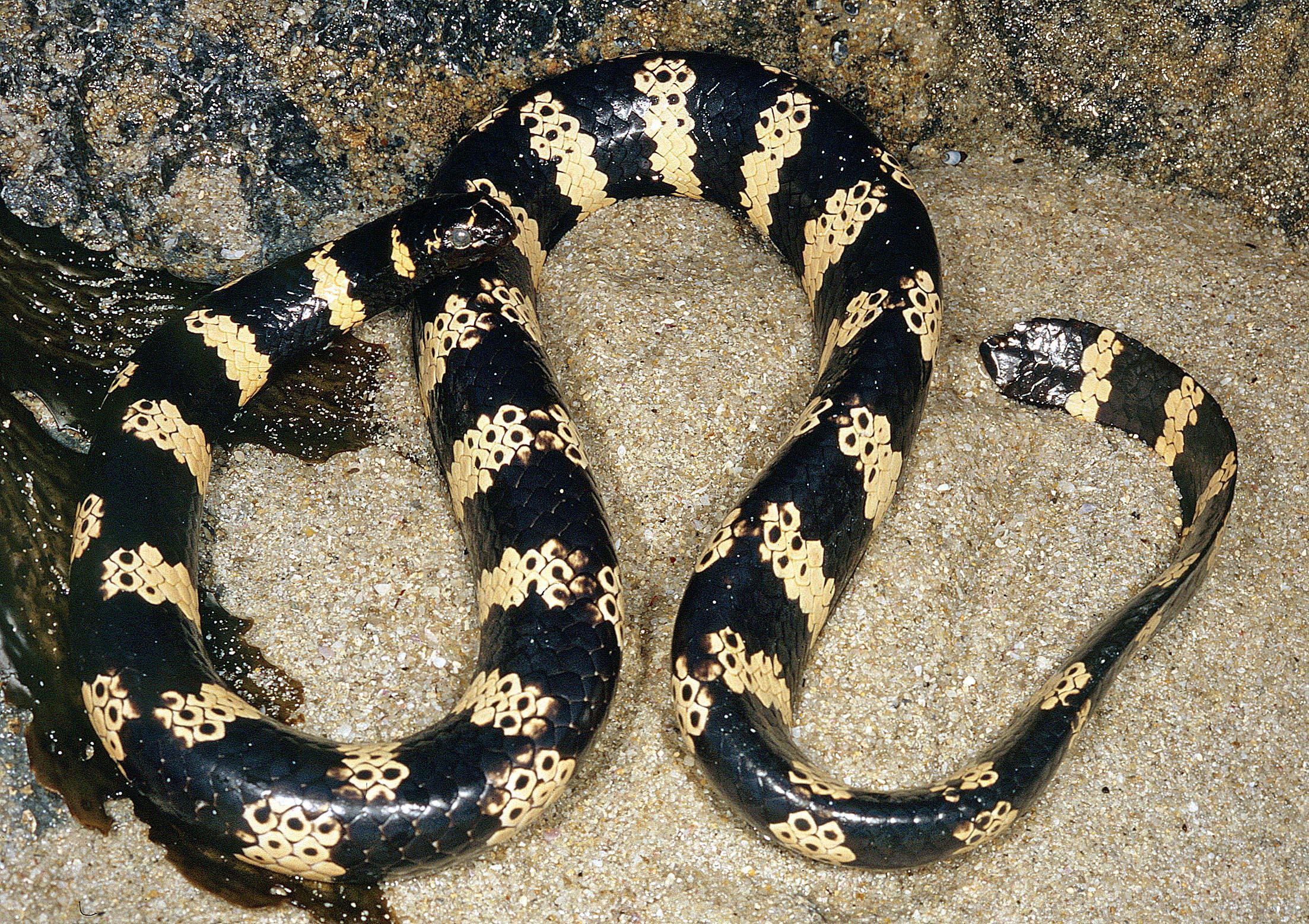Scientists discover new species of turtle-headed sea snake

Emydocephalus orarius, Western Turtle-headed Sea Snake, Shark Bay (Credit: Brad Maryan)
University of Adelaide researchers have discovered a new species of turtle-headed sea snake in Western Australia.
The new species, Emydocephalus orarius, or the Western Turtle-headed Sea Snake, is found from Shark Bay to Broome on soft sandy habitats at depths ranging from 15 to 70 metres.
Lead author of the study and PhD candidate at the University of Adelaide's School of Biological Sciences, James Nankivell, says this particular sea snake differs from other species of turtle-headed sea snakes which are most often found in more shallow coral reefs.
Turtle-headed sea snakes are an unusual group of sea snakes that feed exclusively on fish eggs and have a highly degenerated venom system which renders them harmless to humans.
The team found a total of seven specimens in museums, in addition to a number of live animals found on research trawls in Western Australia. Their research has been published in the journal Zootaxa.
“At this stage we don’t think the new species is under serious threat, but describing a species is important for conservation since we can’t assess or protect an organism if we don’t know that it exists.” University of Adelaide PhD candidate James Nankivell
“We had suspected for some time that there may be undiscovered species of turtle-headed sea snake because they are morphologically variable with a wide geographic distribution,” James said.
“When we compared genetic data between the new species and the others we were surprised at how distantly related it was to the other two species.”
“The new species differs subtly from the others in scalation and also tends to be larger.
“Snakes from the Pilbara are usually heavily spotted while those from Shark Bay have highly contrasting bands”.
The discovery brings the total number of sea snakes endemic to Western Australia to six.
The Leaf-scaled sea snake and Short-nosed sea snake disappeared from Ashmore Reef, but were later found to be relatively common along the coastline of Western Australia.
“Western Australia is a hot spot for sea snake diversity in Australia but was poorly surveyed until recently,” James said.
“This has also resulted in the rediscovery of a couple of species previously thought extinct,” James said.
“At this stage we don’t think the new species is under serious threat, but describing a species is important for conservation since we can’t assess or protect an organism if we don’t know that it exists.”
